Why does your coffee taste watery? It’s frustrating when that first morning sip lacks the rich, bold flavor you’re craving. Whether you’re brewing at home or questioning your barista’s skills, watery coffee can ruin your day before it even begins.
The perfect cup of coffee should deliver robust flavor and satisfying body—not a disappointing, diluted experience. Understanding the causes behind watery coffee is the first step to fixing this common problem. From incorrect coffee-to-water ratios to grind size issues or even equipment problems, several factors might be sabotaging your brew.
Understanding Watery Coffee: What Makes Your Brew Taste Diluted
Watery coffee lacks the robust flavor profile and satisfying mouthfeel that coffee enthusiasts crave. This diluted experience occurs when the balance between coffee compounds and water becomes disproportionate. Several factors contribute to this common brewing mishap, ranging from technique errors to equipment limitations.
Poor Extraction: The Root of Watery Coffee
Extraction fundamentally determines coffee strength and flavor concentration. Under-extraction happens when water passes through the coffee grounds too quickly, failing to dissolve enough flavor compounds. The resulting brew tastes weak, sour, and lacks complexity. Factors affecting extraction include grind size, water temperature, and brew time – all critical variables in achieving proper coffee strength.
Improper Coffee-to-Water Ratio
The coffee-to-water ratio serves as the foundation for brew strength. Using too little coffee or too much water creates an imbalanced ratio that produces thin, watery results. Industry standards recommend a ratio between 1:15 and 1:18 (coffee to water) for optimal flavor development. Many home brewers unknowingly use ratios closer to 1:25 or higher, significantly diluting their coffee’s potential richness.
Issues with Grind Size
Grind size directly impacts extraction efficiency. Coffee ground too coarsely for your brewing method creates paths of least resistance for water flow, resulting in under-extraction. Water rushes through these larger particles without fully dissolving the available compounds. Different brewing methods require exact grind sizes – espresso needs fine grounds while French press works best with coarse particles.
Water Temperature Problems
Water temperature plays a crucial role in compound extraction from coffee grounds. Temperatures below 195°F (90°C) extract insufficient flavor compounds, leaving many desirable elements behind in the grounds. The ideal brewing temperature range falls between 195-205°F (90-96°C) to properly dissolve the full spectrum of coffee flavors without burning the grounds.
Common Causes of Watery-Tasting Coffee
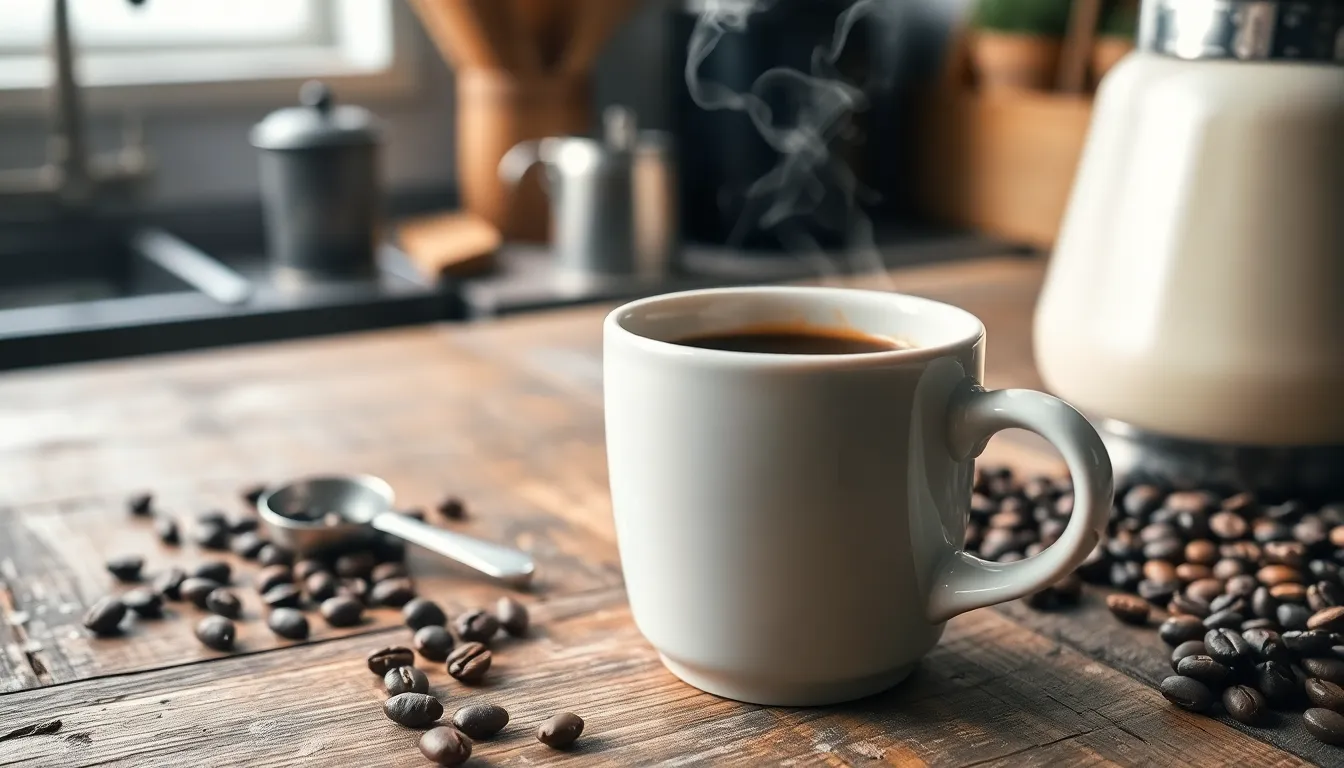
Watery coffee lacks the rich, full-bodied flavor that makes a perfect cup worth savoring. Several key factors contribute to this disappointing brewing outcome, from basic measurements to equipment settings.
Incorrect Coffee-to-Water Ratio
The coffee-to-water ratio forms the foundation of your brew’s strength and flavor profile. Using too much water relative to coffee grounds dilutes the flavor compounds, resulting in a weak, unsatisfying cup. For optimal results, measure 1-2 tablespoons of coffee grounds per 6 ounces of water. Many coffee enthusiasts who’ve struggled with watery brews report important improvement after simply adjusting this ratio. Precision matters here—even small deviations can dramatically affect your coffee’s body and taste intensity.
Poor Quality Coffee Beans
Coffee beans’ quality directly impacts your brew’s flavor depth and complexity. Stale or low-quality beans contain fewer extractable compounds, creating a thin, watery taste regardless of your brewing technique. Fresh, high-quality beans from reputable sources provide richer flavor profiles and more robust extractions. The beans’ roast date matters too—coffee loses aromatic compounds and oils within weeks after roasting, gradually diminishing its potential for a full-bodied cup. Premium single-origin beans typically offer more distinct flavor notes than mass-produced alternatives.
Inadequate Brewing Time
Extraction time controls how thoroughly flavor compounds transfer from your coffee grounds to water. Under-extraction occurs when water passes through grounds too quickly, failing to dissolve sufficient flavor compounds and resulting in watery coffee. Different brewing methods require exact timing—pour-overs typically need 2-4 minutes, while French press requires 4-5 minutes for complete extraction. Temperature also affects extraction efficiency, with water below 195°F extracting fewer compounds. Many coffee shops maintain strict timing protocols to ensure consistent extraction across every cup they serve.
Your Brewing Method May Be the Culprit
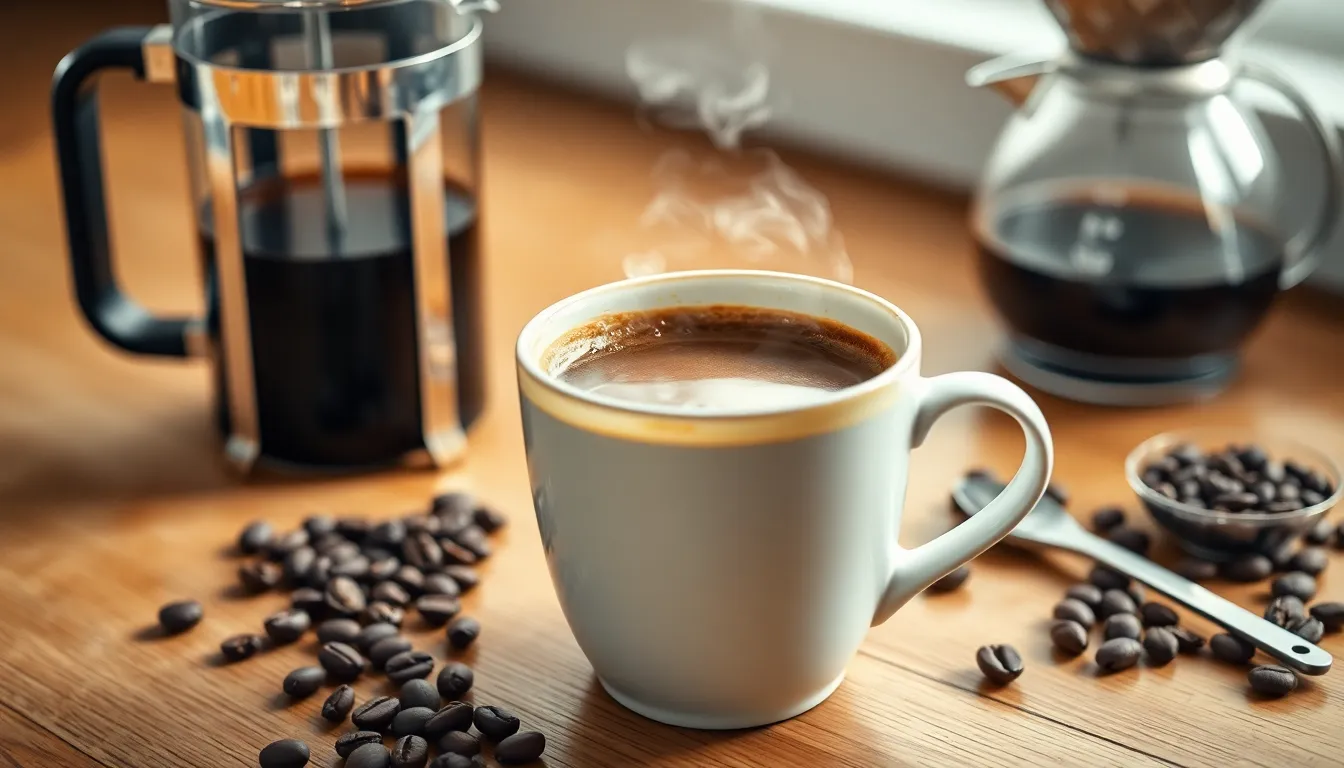
Different brewing methods extract coffee flavors in unique ways, and small technique errors can lead to watery results. Each brewing system requires exact approaches to achieve that perfect cup with rich, full-bodied flavor.
Drip Coffee Maker Issues
Drip coffee makers produce watery coffee when extraction is compromised by temperature or timing problems. Many machines fail to reach the optimal brewing temperature of 195-205°F, resulting in incomplete flavor extraction from your grounds. Water flowing too quickly through the filter basket creates insufficient contact time between water and coffee. Faulty heating elements in older or lower-quality machines often can’t maintain proper temperatures throughout the brewing cycle. Also, using the wrong filter type allows water to pass through too rapidly, bypassing essential oils and compounds that give coffee its robust character.
French Press Problems
French press brewing delivers watery results when key technique elements are overlooked. Using grounds that are too coarse prevents proper extraction during the recommended 4-minute steeping period. Many people mistakenly use insufficient coffee amounts, with experts suggesting 1-2 tablespoons per 6 ounces of water for optimal strength. Plunging the filter too early cuts the extraction process short, leaving valuable flavor compounds behind in the grounds. Water temperature plays a crucial role too – using water below 195°F fails to dissolve the compounds responsible for rich coffee flavor and satisfying mouthfeel.
Pour-Over Pitfalls
Pour-over methods require precise technique to avoid watery coffee disappointment. Pouring water too quickly creates channels in the coffee bed, allowing water to rush through without proper extraction. Many brewers distribute water unevenly across the grounds, causing some areas to over-extract while others remain virtually untouched. The circular pouring pattern matters – skipping this technique leads to inconsistent extraction and weak coffee. Your pouring height affects turbulence in the coffee bed, with too-high pouring disturbing grounds excessively and too-low pouring failing to agitate them enough for proper extraction. Pour-over success depends on maintaining the right coffee-to-water contact time, which varies based on your exact equipment and coffee selection.
Grind Size Matters: How It Affects Coffee Strength
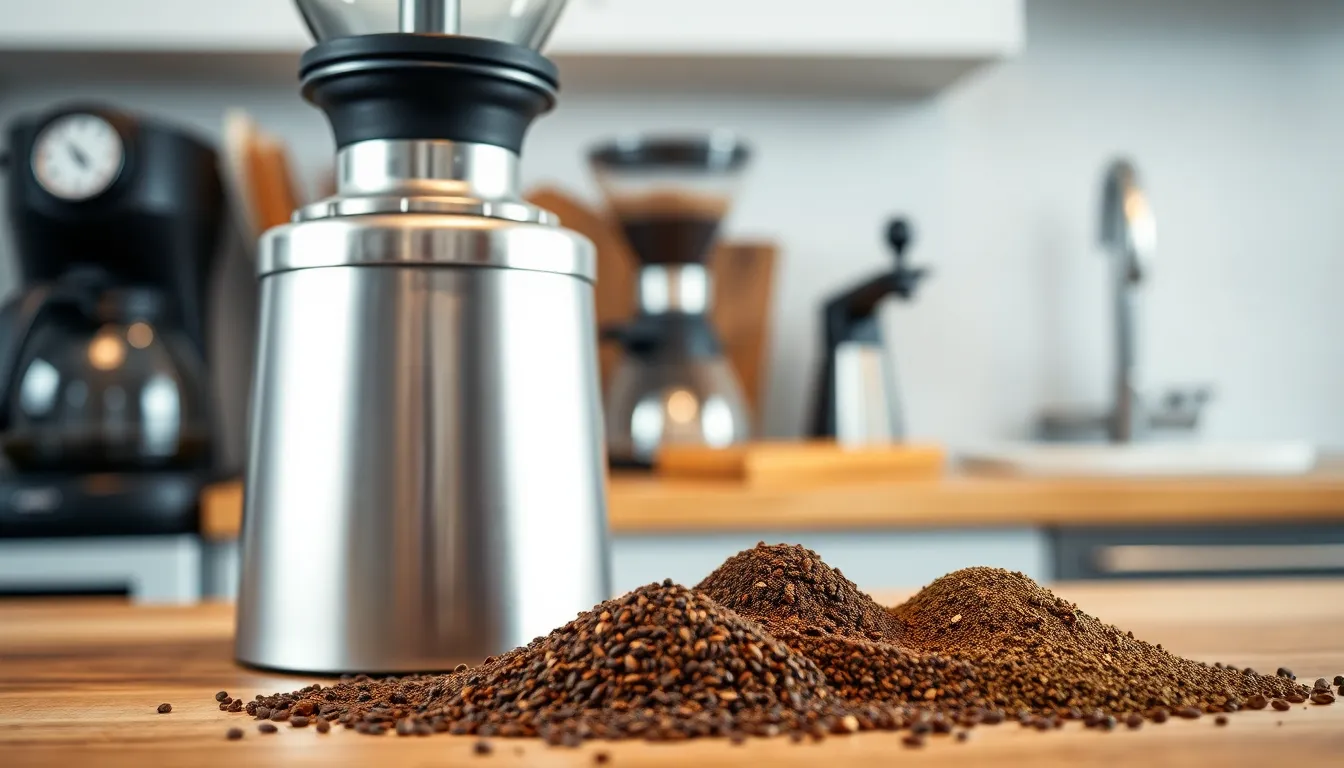
Grind size directly impacts the extraction process and eventually determines your coffee’s strength and flavor profile. Coffee grounds that are too coarse allow water to flow through too quickly, preventing full extraction of the coffee’s oils and flavors. This rapid water movement results in under-extraction, leaving you with a weak, watery cup lacking depth and character.
Finding the perfect grind size depends entirely on your brewing method. Espresso machines require a fine grind to create resistance against the pressurized water, while French presses work best with coarse grounds that won’t slip through the metal filter. Pour-over methods typically need a medium grind to balance extraction time with proper flow rate.
Different brewing methods require exact grind sizes:
- Espresso: Very fine (similar to powdered sugar)
- Drip coffee makers: Medium (resembling regular sand)
- Pour-over: Medium-fine (between table salt and sand)
- French press: Coarse (similar to sea salt)
- Cold brew: Very coarse (like peppercorns)
Consistency in your grind size ensures even extraction across all coffee particles. Burr grinders produce more uniform particles compared to blade grinders, which tend to create inconsistent sizes that extract at different rates. Investing in a quality burr grinder gives you precise control over your grind size and significantly improves extraction quality.
Temperature and grind size work together to affect extraction efficiency. Even with the perfect grind, water below the ideal temperature range of 195-205°F won’t properly dissolve flavor compounds, regardless of how finely you’ve ground your beans. The combination of appropriate grind size and correct water temperature creates optimal conditions for extracting coffee’s full flavor potential.
Water Temperature and Quality Considerations
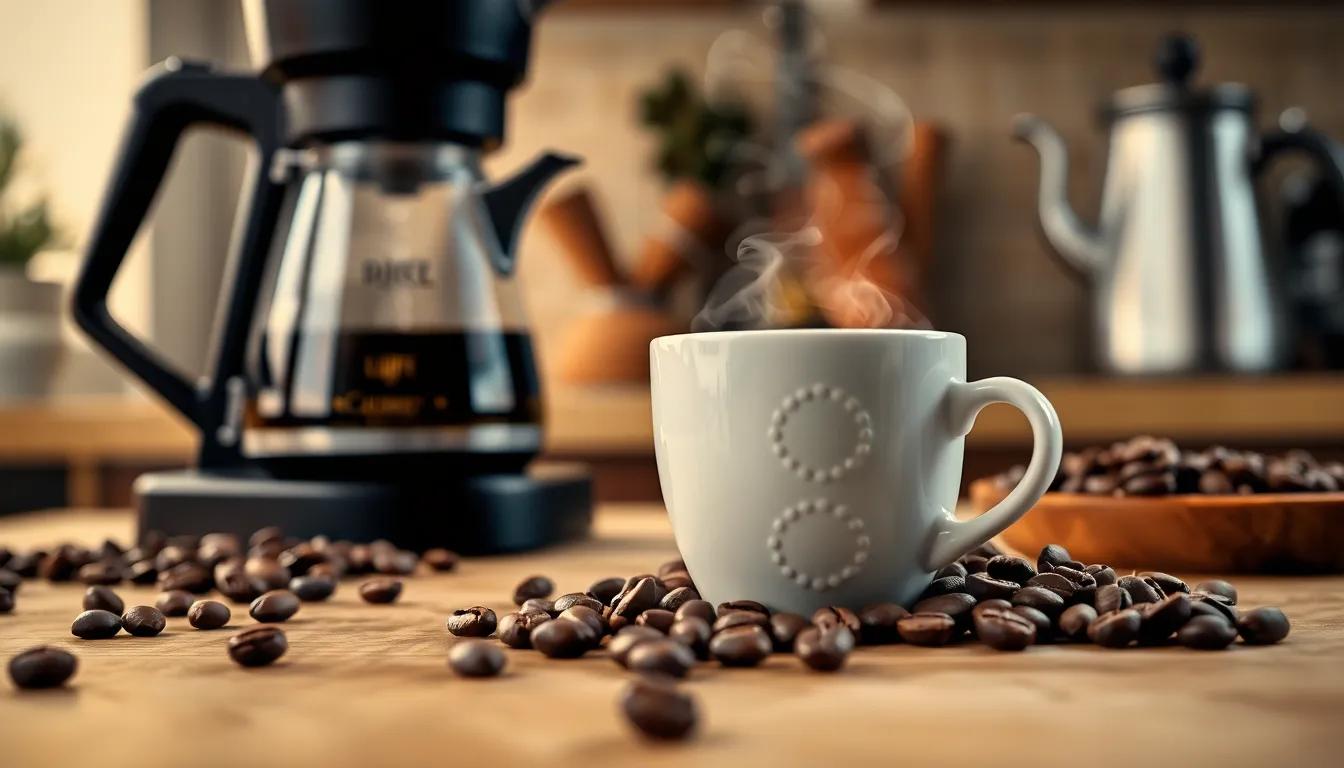
Water temperature plays a critical role in coffee extraction, directly impacting the flavor profile of your brew. Coffee requires water between 195°F and 205°F (90-96°C) to properly extract the complex flavor compounds from the grounds. Brewing with water below 185°F results in insufficient extraction, leaving you with a disappointing, watery cup lacking depth and character.
Temperature fluctuations throughout the brewing process can compromise flavor development. Many home coffee machines fail to reach or maintain optimal brewing temperatures, leading to persistent issues with weak coffee. High-quality equipment with temperature stability features ensures consistent heat levels during extraction, resulting in fuller-bodied coffee with proper flavor development.
The relationship between water temperature and extraction time creates a delicate balance. Hot water dissolves coffee compounds more efficiently, requiring precise timing to avoid both under-extraction (watery taste) and over-extraction (bitter taste). When water temperature falls below the ideal range, even extending brewing time can’t compensate for the reduced extraction efficiency, leaving you with a thin, unsatisfying cup.
Water quality factors beyond temperature also influence your coffee’s taste profile. Mineral content in your water affects how efficiently it extracts flavor compounds from coffee grounds. Filtered water with balanced mineral content generally produces cleaner, more flavorful results than tap water with excessive hardness or chlorine. Poor water quality can inhibit extraction and contribute to that disappointing watery taste in your morning cup.
Equipment performance significantly impacts water temperature maintenance during brewing. Coffee makers with damaged heating elements or inadequate insulation often fail to maintain proper brewing temperatures. Regular maintenance of your brewing equipment, including descaling to remove mineral buildup, helps ensure optimal heating performance and consistent temperature throughout the extraction process.
Altitude affects water’s boiling point, requiring adjustments to brewing temperature in higher elevations. At sea level, water boils at 212°F (100°C), but this temperature decreases approximately 1°F for every 500 feet of elevation gain. Coffee enthusiasts at higher altitudes may need specialized equipment with temperature control features to achieve proper extraction and avoid watery results.
Simple Solutions to Fix Watery Coffee
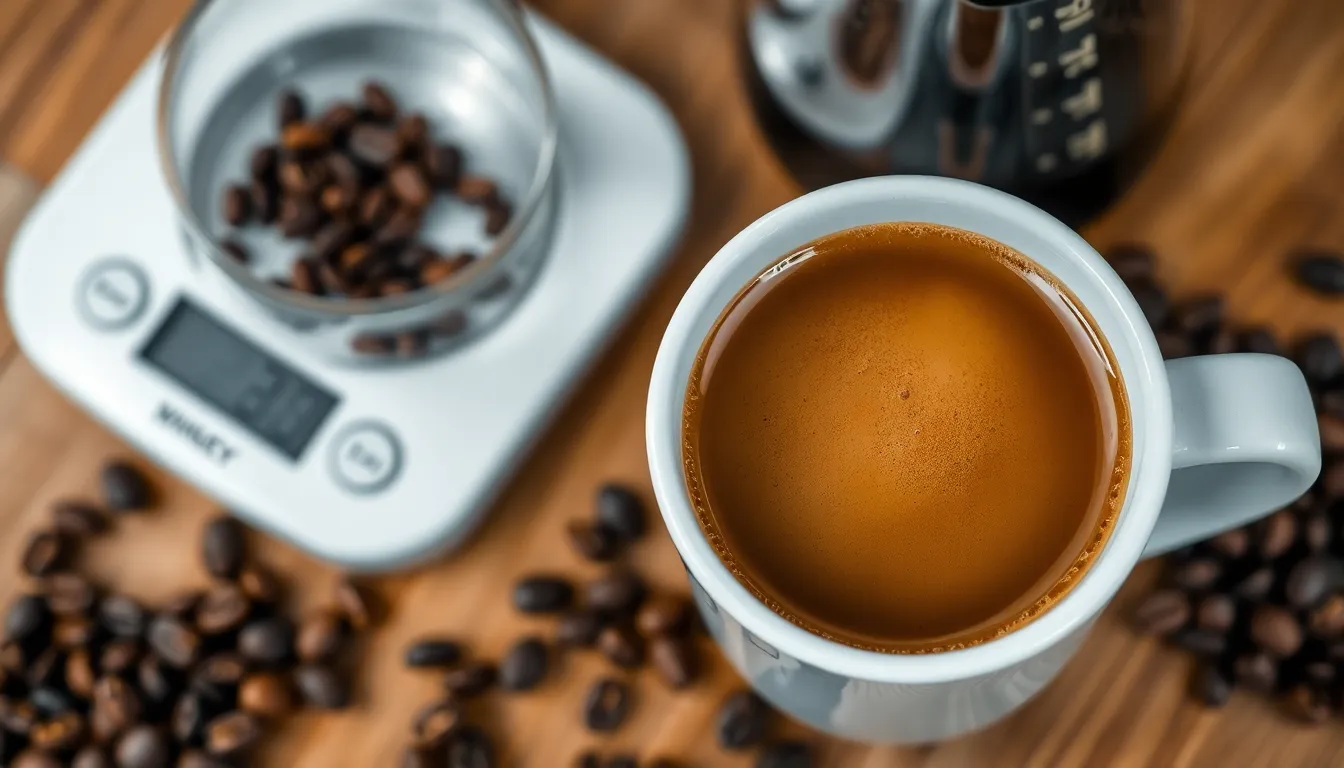
Transforming a weak, diluted brew into a rich, flavorful cup requires addressing the fundamental causes of watery coffee. With a few targeted adjustments to your brewing process, you’ll experience a remarkable improvement in your coffee’s taste and strength.
Adjusting Your Measurements
The coffee-to-water ratio forms the foundation of a well-balanced brew. For optimal flavor extraction, use approximately 1.5 tablespoons of coffee grounds per 6 ounces of water. This proportion ensures your coffee contains enough soluble compounds to create a robust flavor profile. Measuring your coffee with a kitchen scale rather than volumetric measurements provides greater accuracy and consistency. Digital scales allow you to follow the coffee industry’s preferred ratio guidelines of 1:15 to 1:18 (coffee to water). When brewing multiple cups, maintain this ratio by scaling both ingredients proportionally—for example, 3 tablespoons of coffee for 12 ounces of water creates the same strength as smaller batches.
Upgrading Your Equipment
Coffee makers with faulty heating elements often produce watery coffee by failing to reach the optimal brewing temperature. Quality brewing equipment should consistently heat water to between 195°F and 205°F, the ideal range for proper extraction. Test your machine by running it without coffee grounds and measuring the water temperature—readings below 185°F indicate your brewer isn’t performing adequately. Consider investing in equipment with temperature control features or thermal stability to maintain consistent heat throughout the brewing cycle. Regular maintenance, including descaling and cleaning, helps preserve your machine’s heating capability and prevents mineral buildup that can interfere with temperature regulation. For serious improvement, burr grinders deliver uniform grounds that extract more evenly than blade grinders, directly improving flavor concentration in your final cup.
Conclusion
Transforming your watery coffee into a rich flavorful brew is all about precision and quality. By adjusting your coffee-to-water ratio using 1-2 tablespoons per 6 ounces of water you’ll immediately notice improvement. Don’t overlook the importance of your grind size which should match your brewing method for optimal extraction.
Remember that water temperature between 195-205°F is crucial for dissolving those precious flavor compounds. Investing in quality beans and appropriate equipment will elevate your coffee experience significantly.
With these adjustments you’ll say goodbye to disappointing watery coffee and hello to that perfect cup you’ve been craving. The difference isn’t just noticeable – it’s groundbreaking for your daily coffee ritual.
Frequently Asked Questions
Why is my coffee always watery?
Your coffee might be watery due to several factors: using too little coffee grounds, incorrect grind size, poor quality beans, inadequate water temperature, or insufficient brewing time. The standard coffee-to-water ratio is between 1:15 and 1:18 (1-2 tablespoons per 6 ounces of water). Using old beans or improper brewing techniques can also result in a weak cup.
What is the ideal coffee-to-water ratio?
The ideal coffee-to-water ratio is between 1:15 and 1:18, which translates to approximately 1-2 tablespoons of coffee grounds per 6 ounces of water. For more precision, use a kitchen scale and aim for about 10-12 grams of coffee per 6-ounce cup. This balance ensures proper extraction without making the coffee too strong or too weak.
Does grind size affect coffee strength?
Yes, grind size significantly impacts coffee strength. Too coarse a grind can lead to under-extraction and watery coffee. Different brewing methods require specific grind sizes: espresso needs fine grounds, drip coffee works best with medium grounds, and French press requires coarse grounds. Using a quality burr grinder ensures consistent particle size for even extraction.
What water temperature is best for brewing coffee?
The ideal water temperature for brewing coffee is between 195-205°F (90-96°C). Water below 185°F results in under-extraction and watery coffee. Water that’s too hot can over-extract, creating bitter flavors. If you’re at higher elevations, adjust accordingly as water boils at lower temperatures. Most quality coffee makers maintain optimal temperature automatically.
Can my coffee maker cause watery coffee?
Yes, your coffee maker can cause watery coffee if it doesn’t reach proper brewing temperatures (195-205°F) or has inconsistent water flow. Old or poorly maintained machines may have temperature fluctuations or timing issues that prevent proper extraction. Regular descaling and cleaning help ensure optimal performance. Consider upgrading to a SCAA-certified brewer for better temperature stability.
How does brewing time affect coffee flavor?
Brewing time directly impacts extraction levels. Too short a brewing time results in under-extraction and watery coffee. Each method has ideal timing: 25-30 seconds for espresso, 3-4 minutes for pour-over, and 4 minutes for French press. Rushing the process prevents water from fully dissolving flavor compounds. Follow recommended times for your specific brewing method.
Does water quality matter when brewing coffee?
Absolutely. Water comprises over 98% of your coffee, so its quality significantly impacts flavor. Hard water with high mineral content can interfere with extraction, while soft water may produce flat-tasting coffee. Using filtered water removes chlorine and balances minerals for optimal brewing. Bottled spring water with moderate mineral content works well if your tap water has strong flavors.
Are fresh coffee beans really that important?
Yes, fresh beans are crucial for flavorful coffee. Coffee begins losing aromatic compounds and oils immediately after roasting. Beans older than 2-4 weeks post-roast date can produce weak, flat-tasting coffee regardless of your brewing technique. Buy freshly roasted beans in small quantities, store them in an airtight container away from light and heat, and grind just before brewing.
How can I fix my watery coffee immediately?
To immediately fix watery coffee, increase the amount of coffee grounds you’re using (try 1.5-2 tablespoons per 6 ounces of water). Ensure your water is hot enough (195-205°F) and adjust your grind size to be finer. For brewing methods like French press or pour-over, extend your brewing time slightly. If using a drip machine, consider using a pre-infusion technique by pausing the cycle briefly.
Which brewing method produces the strongest coffee?
Espresso produces the most concentrated coffee, followed by Moka pot and AeroPress. French press can create strong coffee when used with the correct ratio and brewing time. The strength ultimately depends more on your coffee-to-water ratio than the method itself. Any brewing system can produce strong coffee when you use more coffee grounds relative to water and ensure proper extraction.

